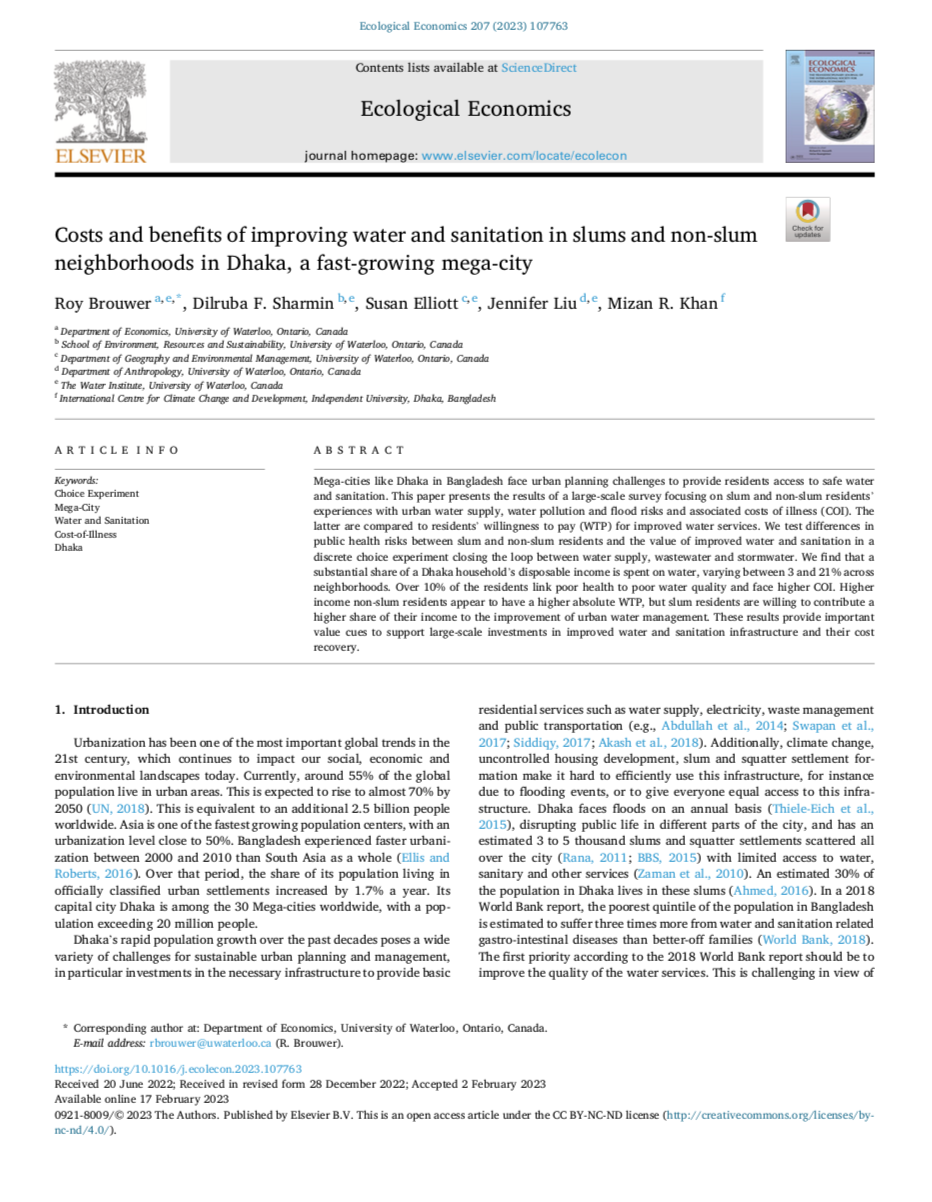Authors: Roy Brouwer, Dilruba F. Sharmin, Susan Elliott, Jennifer Liu, Mizan R. Khan
Mega-cities like Dhaka in Bangladesh face urban planning challenges to provide residents access to safe water and sanitation. This paper presents the results of a large-scale survey focusing on slum and non-slum residents’ experiences with urban water supply, water pollution and flood risks and associated costs of illness (COI). The latter are compared to residents’ willingness to pay (WTP) for improved water services. We test differences in public health risks between slum and non-slum residents and the value of improved water and sanitation in a discrete choice experiment closing the loop between water supply, wastewater and stormwater. We find that a substantial share of a Dhaka household’s disposable income is spent on water, varying between 3 and 21% across neighborhoods. Over 10% of the residents link poor health to poor water quality and face higher COI. Higher income non-slum residents appear to have a higher absolute WTP, but slum residents are willing to contribute a higher share of their income to the improvement of urban water management. These results provide important value cues to support large-scale investments in improved water and sanitation infrastructure and their cost recovery.

